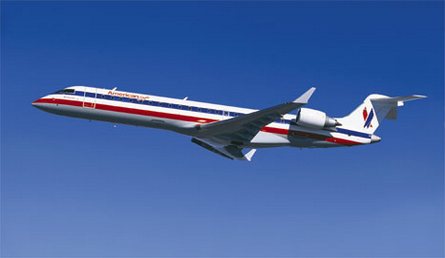AMR is pressing forward with plans to divest its wholly owned regional American Eagle Airlines even as it prepares to slash the carrier's fleet and reduce feeder services to sister American Airlines in response to record-high fuel costs and growing economic concerns.
The company in November 2007 said it would consider a spin-off to shareholders or a sale to a third party this year, among other options. A separation is still in the works despite AMR's announcement that as many as 40 regional jets, plus an unidentified number of turboprops, will be culled at Eagle to facilitate a 10-11% reduction in regional affiliate capacity in the fourth quarter.
 |
|---|
This is in addition to the retirement of up to 45 aircraft operated by American - mostly Boeing MD-80s, but some Airbus A300s - which is in line with a reduction in fourth quarter domestic mainline domestic capacity of 11-12%. Service cuts and thousands of job losses are expected as a result, as well as the potential closure of some facilities.
"We are moving aggressively to stabilise the economics of our core airline business, while moving forward with initiatives - including the divestiture of American Eagle and [investment advisory] American Beacon - that we believe will unlock value for you and your fellow owners of the company," says AMR chief executive Gerard Arpey.
It remains to be seen if the sale of Eagle will pose a challenge to AMR. The carrier owns a large fleet of small regional jets - aircraft that face increasing pressure in today's tough operating environment. Flight's ACAS database lists Fort Worth, Texas-headquartered American Eagle as operating 25 Bombardier CRJ700s, 38 Embraer ERJ-135s, 59 ERJ-140s, and 29 Saab 340B turboprops. Executive Airlines - which flies as American Eagle from San Juan - operates 39 ATR 72 turboprops.
Divestiture of Eagle is less about making money "and more about a return to sane strategy" where costs can be better controlled, says Richard Aboulafia, vice-president analysis at Teal Group. "I never understood why any mainline carrier would want to own its own feeder. That's like outsourcing to your own factory. How do you pressure them for costs?"
AMR has stayed mum about what regional types will be affected by the fleet cuts. Merrill Lynch analyst Michael Linenberg in his latest report says aircraft most likely to be removed are the 37-seat ERJ-135 jets, which "probably aren't even close to hitting break-even at current fuel prices". Among Eagle's turboprops, he says, "it would seem that some or all of the 34 Saab 340Bs are the best candidates for removal".
Should Saab 340Bs be cut from the fleet, Saab Aircraft Leasing (SAL) chief executive Michael Magnusson believes the market can soak them up, but notes: "Obviously it depends on how many come out how quickly." Also in question is whether the turboprops would even be put up for sale. A large batch of Eagle Saab 340Bs have been parked since 9/11. "Eagle has refused to sell them in case they need them. Now it will be interesting to see if they will change that policy," says Magnusson.
Source: Flight International
















